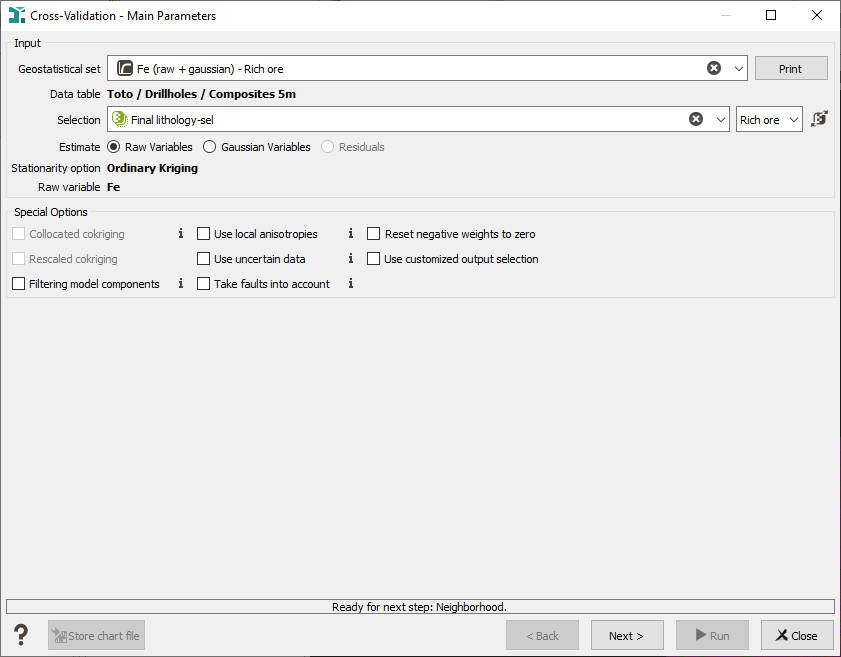Cross-Validation
This procedure is designed to carry on Cross-Validation tests (or blind test) which enables the comparisons between the true data set and the estimated values.
The Cross-Validation is a general procedure which checks the compatibility between a set of data and its structural model. It can be used whether the structure is stationary or non stationary, in univariate or multivariate cases, and for any type of Neighborhood (Moving or Unique).
The principle is to consider each active point for which a target variable is defined one after the other.
The target variable at the data point is temporarily discarded and an estimation Z* of this variable at this point is calculated by kriging or cokriging, using its neighborhood information (nearby samples) and the model to be tested. The variance of this estimation Sigma2 is also calculated during the kriging or cokriging procedure. The estimated value is then compared to the true value that was discarded.
Note that in the multivariate case, there can be an important difference between the Moving and the Unique neighborhood approaches. In Unique neighborhood, only the value of the target variable at the target point is ignored during the elementary cross-validation step. In Moving neighborhood, several options are available. In addition to the information of the neighboring points, we may decide at the target point:
- to discard all variables;
- to use all the variables but not the target one;
- to use only the target variable.
We can then compare the experimental error (between the estimated and the true values) and the forecasted error within the model through the following average quantities:
- Mean error;
- Variance of error;
- Mean standardized error;
- Variance of standardized error.
This Cross-Validation application is meant to perform several estimation methods based on kriging techniques such as:
- Ordinary Kriging and Simple Kriging
- External Drift Kriging
- (Collocated) Cokriging
- Rescaled Cokriging
- Kriging with Variance of Measurement Error
- Kriging with Local Anisotropies
- Kriging with Filtering
- Kriging with Faults
Note: For detailed information about the methodology underlying these techniques, please refer to the technical reference Linear Estimation.


